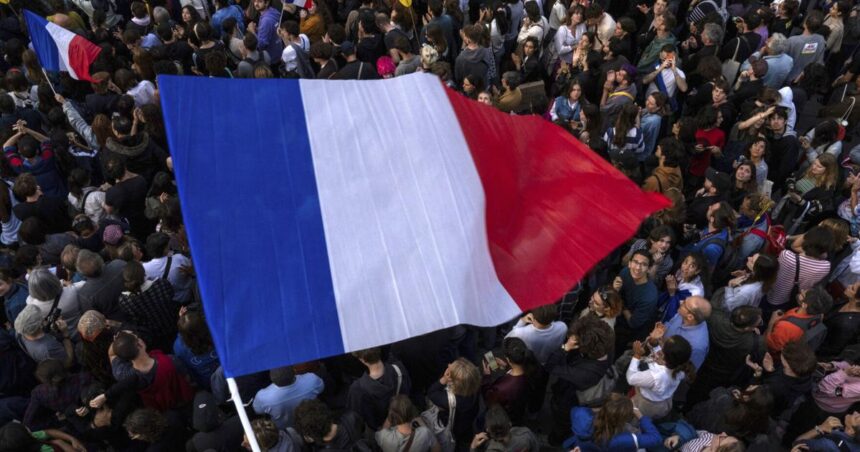PARIS — They’re often thought to have practically cornered the market on romance, with Edith Piaf seemingly speaking for a nation of amorous souls when she sang: “It’s crazy how much I love you.”
Yet they also can bicker and squabble as though they were Olympic sports.
They practically wrote the book on fraternity, liberty and equality — words inscribed on their schools and town halls — but also recognize that those ideals aren’t always applied to citizens of color.
Les Français — the French, as the people of France call themselves — simply don’t fit neatly into any one box.
Now that they’re hosting the Olympics, here’s a look at some of the particularities that make the French, well, French:
The basics
France has one of Europe’s most diverse populations thanks to centuries of conquest and, in the last 200 years, immigration from Italy, Spain, eastern Europe, and France’s former colonies overseas.
People are also reading…
Although comic-strip hero Asterix the Gaul is something of a national icon, loved by generations of French readers for his feisty ingenuity and pluck, the ancient Gauls who populated much of what is now France more than two millennia ago — and who some in France still call “our ancestors” — were followed by waves of others.
Romans, Franks (from whom France got its name), Normans (who lent their name to what is now Normandy ) and more fought for the rich lands boxed in by the Mediterranean’s waters and mountains of the Alps and Pyrenees in the south, the mighty Rhine river in the east, and seas to the west and north.
Those natural barriers still largely delineate the borders of what is the largest territory in the European Union and its roughly six-sided shape — the reason the French often refer to their country as “the Hexagon.”
The national statistics agency, Insee, says France’s population at the start of this Olympic year numbered 68.4 million. That includes the 2.2 million inhabitants of five formerly colonized territories in the Caribbean, South America and Indian Ocean that are administered as overseas regions of France — considered as French as Paris, the Olympic host city.
By Insee’s count, France has 2 million more women than men. But France has never had a female president and counts dozens of women killed in domestic violence each year. Of the 78 luminaries honored by being inducted in the Panthéon, the centuries-old Paris resting place for the good and great of France, just five are women. The first, scientist Marie Curie, wasn’t added until 1995.
A colorblind rainbow nation
Officially, France is blind to the many colors of its inhabitants. Intending to treat all equally, the republic doesn’t count citizens by race or religion. But people of color and human-rights watchdogs say France’s ideal of colorblind universalism results in discrimination that goes unmeasured and unsolved. Some French people, especially those who are white, consider it racist to even discuss skin color.
Yet pervasive discrimination has repeatedly boiled over into violent unrest, often in underprivileged parts of France with immigrant populations. Racial and religious intolerance have contributed to a deep polarization of French politics.
The anti-immigration, far-right National Rally party surged this year in elections marked by unusual violence. Its leaders have long targeted immigrants and their France-born children for supposedly failing to integrate.
A godless nation of many religions
After centuries of religious conflict, modern France is constitutionally secular, with church and state separated. Faiths are kept out of shared public spaces like schools, hospitals, courts, and sports fields, where students, staff, and players aren’t allowed to wear ostentatious crosses, kippahs, or Islamic head coverings. France won’t allow its Olympians to wear headscarves at the Paris Games — a blanket ban that won’t apply to athletes from other nations.
But France also legally guarantees the right to believe — or to not believe — and to practice one’s faith. Its religious architecture — from Paris’ iconic Notre Dame Cathedral to modernist architect Le Corbusier’s Chapel of Notre-Dame du Haut in Ronchamp, eastern France — is stunning in its variety, beauty, and history.
France has about 100,000 places of worship, including those that are no longer used, with the vast bulk of them built for the Catholic faith, according to the Observatory of Religious Patrimony, a preservation group.
Quiet churches and busy mosques speak to a changing picture of faith and worship in France. A major and rare public study published by Insee last year, which questioned more than 27,000 adults aged 18-59, found interest in religion fading. Just over half of the respondents declared that they have no faith, a growing trend particularly pronounced among people born in France and without any immigrant backgrounds.
Less than one-third identified as Catholic — still the largest single group of believers, although under 10% of them said they are regular churchgoers.
Wine and food
Ah, the reds, whites, and rosés! The French used to guzzle their wines without moderation. It wasn’t until 1956 that the government barred children — under 14, that is — from being served alcohol in school canteens.
But since the 1960s when French drinkers were downing a woozy 130 or so liters (35 or so gallons) of wines each per year, plus many more liters of beer and cider, they have steadily sobered up, cutting their consumption by around three-quarters and drinking higher-quality wines than the rotgut that washed down older generations’ meals, Insee data shows.
Food habits are changing, too. Schools play a key role in passing from generation to generation France’s high regard for freshly cooked meals, with canteens typically offering a starter and a main course followed by a milk product (cheese, yogurt) and/or a dessert.
The Agriculture Ministry says about 60% of students eat at their school canteens at least four times a week. Schools also offer tasting classes and school canteens are obliged to offer at least one vegetarian menu per week.
“Does your family pray before eating?” asks one joke about French eating habits. The punchline: “No, we are French, we know how to cook.”
The French are just behind the Italians as the least overweight population in the European Union, according to the most recent figures from the EU’s statistics agency, from 2019. It found that 47% of French adults were overweight, with a body mass index of 25 or above, compared with 46% of Italian adults.
But French people also have become fans of what they call “le fast food” — burgers, pizzas, kebabs, etc.
In the 45 years since McDonald’s opened its first restaurant in France in 1979, the country has become one of its largest markets in Europe, with 1,560 eateries in cities and towns nationwide.




